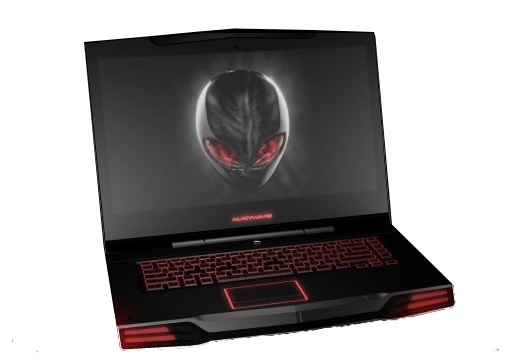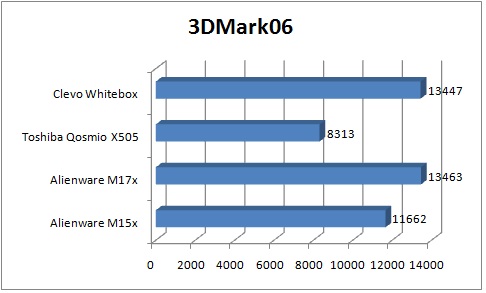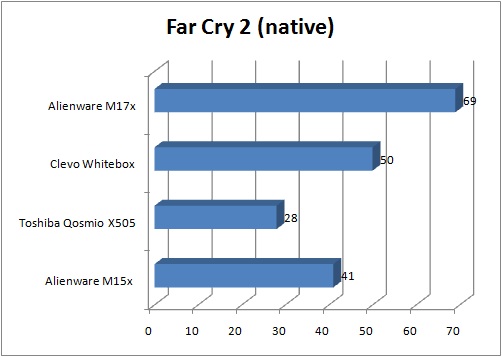Core i7 Alienware M15x Benchmarked: Most Powerful, Expensive 15-inch Gaming Notebook in the Universe
Scant weeks after we had a chance to review its larger brother, we received the Alienware 15x, the new 15-inch gaming rig that features Intel's new Core i7 processor. Like the Alienware M17x, we were not disappointed in the M15x' performance. As we saw when we tested the Toshiba Qosmio X505 and the Clevo Core i7 whitebox we received from Intel, the M15x blew away many of our benchmarks, and performed better than any other 15-inch notebook to date. For those of you who aren't familiar, Core i7 is Intel’s latest quad-core family of processors. Unlike its current Core 2 Quad processors, Core i7 uses Intel’s Hyper-Threading Technology to multi-task across eight threads instead of just four, which means it can more efficiently offload tasks across its cores. Threads are like highways: the more lanes, the faster and more efficiently data can travel from one point to another. Core i7 also uses Intel’s Turbo Boost technology, which dynamically changes the processor clock speed depending on the number of active cores, your power consumption, and the processor temperature. The upshot is that you get more speed when you need it. A lot of it. First, what's under the hood of our M15x:
- Operating System: Windows 7 Ultimate
- CPU: 1.73 GHz Intel Core i7 Q820
- RAM/Expandable to: 4GB/8GB
- Hard Drive: 250GB/7200 rpm
- Graphics/video memory: Nvidia GeForce GTX 260M/1GB
- Display size/resolution: 15 inches/ 1920 x 1080
Coupled with a Blu-ray drive and a Nebula Red finish, our system came in around $2,698 when we configured it online. That's about $2,000 less than the M17x we reviewed, and around $900 more expensive than the Qosmio X505. So how did it fare in synthetic testing and real-world gaming? Read on.
When it came to our traditional benchmarks, the Alienware M15x performed about as we expected. On PCMark Vantage, which measures overall system performance, it surpassed every other notebook we've tested, with the exception of the Clevo whitebox, which had a more powerful 2GHz Core i7 920QM processor, 4GB of RAM, and an 80GB SSD. Still, the M15x beat out the M17x (which uses a 2.53GHz Intel Core 2 Duo QX9300 CPU, 8GB of RAM, and dual 500GB, 7200rpm hard drives) and the X505 (Core i7 720QM, 6GB RAM, 64GB SSD).
Alienware didn't put the most powerful graphics card it could have in the M15x, which showed in its 3DMark06 scores. While the Nvidia GeForce GTX 260M GPU and 1GB of video memory is certainly strong, it doesn't compare to the dual GTX 280M GPUs in the M17x, or even the single GTX280M chip in the Clevo. However, it handily beats out the GTS 250M graphics in the Qosmio X505.
However, the hypothetical performance of the graphics chips did not translate into real-world scenarios, such as our transcode test, where we convert a 114MB MPEG-4 to AVI using vReveal, a CUDA-enabled application. As you can see, the X505 performed the best, finishing in 1:29, almost a minute faster than the M15x. In fact, the M15x came in third overall, beating only the Clevo whitebox.
We also used the same video file to measure the performance of the systems' multiple cores using Oxelon Media Converter, an application that's capable of multithreading and can effectively use all the cores a notebook has to offer. In this test, we see that the three Core i7 notebooks perform roughly as expected, with the most powerful processor, the 920QM in the Clevo, finishing the test faster than the Q820 in the M15x, and the 720QM in the X505.
GAMING Of course, what the M15x is designed to do is play games, and play them well, and in this, the system did not disappoint. In Far Cry 2, we averaged 113 frames per second with the resolution set to 1024 x 768, and graphics set to optimal. This beat out everything but the Clevo.
Likewise, when we cranked the resolution up to native (1920 x 1080 in the case of the M15x) and set the graphics to Very High, the notebook was still able to register a very playable 41 fps. While it couldn't touch the M17x, that system had two GTX 280M graphics cards, so we expected it to perform the best.
Sign up to receive The Snapshot, a free special dispatch from Laptop Mag, in your inbox.
When it came to other games, the M15x was excellent, too. In Call of Duty: World at War, we averaged 42 frames per second with the resolution set to 1920 x 1080; running through Pacific island jungles, action was smooth and crisp, and there was enough sound separation between the two speakers that we could hear and anticipate enemies coming towards us from either side. We also had equal success running Left 4 Dead, where we had an average framerate of 56 fps, and Batman: Arkham Aslylum, where the framerate dropped to 37, but was still very playable. Here's a screenshot of some zombies getting theirs:
We look forward to completing our testing in the next day or two. So stay tuned for our full review!
Michael was the Reviews Editor at Laptop Mag. During his tenure at Laptop Mag, Michael reviewed some of the best laptops at the time, including notebooks from brands like Acer, Apple, Dell, Lenovo, and Asus. He wrote in-depth, hands-on guides about laptops that defined the world of tech, but he also stepped outside of the laptop world to talk about phones and wearables. He is now the U.S. Editor-in-Chief at our sister site Tom's Guide, where he oversees all evergreen content and the Homes, Smart Home, and Fitness/Wearables categories for the site..








